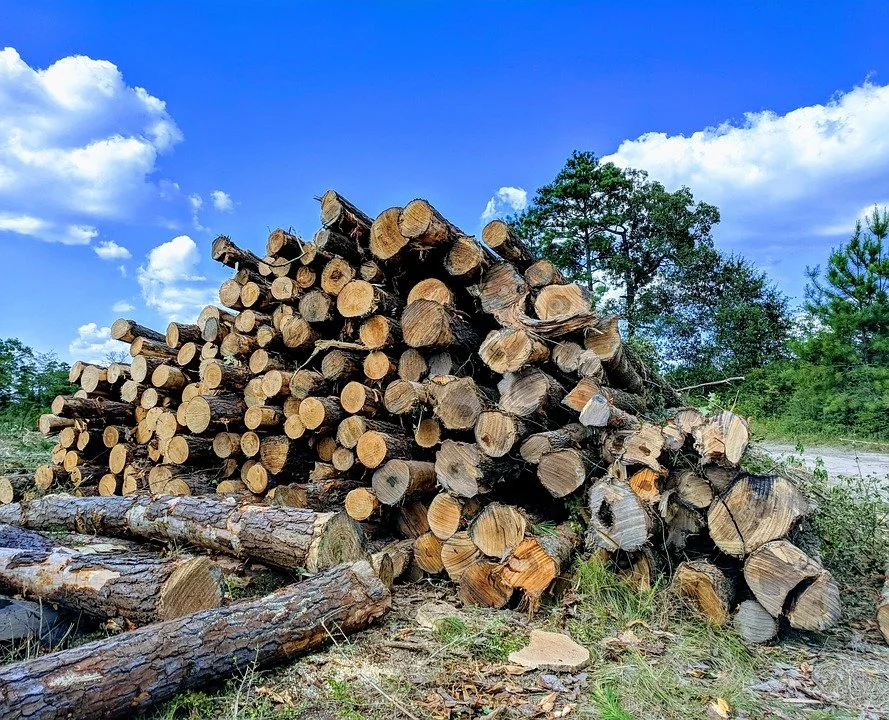Biomass Energy: Environmental Friend or Foe?
Photo by SeashellGypsy is licensed for use under the Pixabay License.
Becoming carbon and energy neutral are important priorities for the Biden administration, for companies, and for the globe. Historically, coal and wood dominated the energy market, but today, countries are shifting to alternative sources of renewable energy. In the United States, renewable energy, a term used to describe sources of energy that can be replenished by nature, is the fastest growing form of energy, with a 100 percent increase in energy output from 2000 to 2018. There are currently five main sources of renewable energy: wind, solar, geothermal, biomass, and hydropower.
While many different forms of renewable energy have come under fire for their associated environmental harms, the majority are still widely used because their benefits are said to outweigh the damage they cause. For some forms of energy like wind energy and solar energy, the harms are rather obvious: they can be an eyesore, they kill birds or other wildlife, and they disrupt the environments where they are installed. While debates over wind and solar energy are becoming increasingly common, other forms of energy, such as biomass energy, are less controversial because of the public’s lack of understanding.
Only in the last year has biomass energy come under scrutiny as people debate the potential positive and negative effects it could have on the environment. Biomass energy is a form of renewable energy that is “generated or produced by living or once-living organisms.” This typically involves the burning of natural material—often wood or grass—to create energy. Biomass energy can also involve the generation of energy through gasification (the conversion of solid objects into gas), anaerobic decomposition (decomposition without oxygen), or pyrolysis (decomposition using high temperatures).
Politically, biomass energy is “in.” President Joe Biden has promoted green energy and carbon neutrality since before his time in office, and he recently promised to make $4.3 million in new and ongoing funding available to support biomass powered aviation fuel projects. Many consider biomass energy, like other forms of green energy, as carbon neutral. Biomass energy, while friendly sounding, is not as environmentally friendly as many people think. The United States must revisit its categorization of biomass energy as carbon neutral, because biomass energy does not fundamentally fit this category.
Biomass energy, while technically “non-polluting,” as it doesn’t involve any non-natural waste, often functions through cutting down large swaths of forest and combusting them to produce energy. While this practice has been considered “green” or “carbon neutral” by many, including the European Union, environmentalists have frequently criticized these practices because they require logging, long distance transport, clear cutting forests (which reduce natural carbon processing), and large-scale burns (which increase air pollution).
Biomass energy theoretically produces CO2 that will be reabsorbed by new trees. However, if the process continues, scientists warn that a reliance on biomass will create increased long term emissions. But there is a problem: biomass energy is far from carbon neutral and is extremely harmful. Biomass energy disrupts forest ecosystems, contributes to ecological disruption in areas surrounding wood-burning facilities, and decreases CO2 processing from trees. It also disproportionately affects certain regions that are large producers of wood fuel, like the American South, which is known as the world’s “wood basket.”
Moreover, biomass energy contributes to negative health outcomes because of decreased green space, inhalation of smoke and dust fumes, and increased industrialization around residential areas. The health costs of biomass energy are disproportionately experienced by individuals in the areas where the wood is sourced from. One study found that wood pellets burned in the United Kingdom led to 13-16 million tons of CO2 emissions in 2019, which is equivalent to the emissions of 7 million cars. Unfortunately, these health risks are often ignored, as many people prefer the energy potential over citizens’ health—especially because these negative health outcomes often cannot be directly linked to biomass energy production.
In the European Union, wood biomass is widely considered to be carbon neutral. The EU has large scale subsidies that are intended to help the biomass energy industry grow as a part of its green goals. This decision resulted in the importation of large amounts of wood pellets from the Southeast of the United States. This further entrenched the American South’s position as the world’s “wood basket” and led to disproportionately more wood harvesting in the Southeast compared to the rest of the globe. In the United States, however, the question of biomass categorization is still under debate, especially because Biden is currently in the process of defining his method to promote green and renewable energy. The United States must set an example by holding itself to a higher standard when it comes to its clean energy goals.
Biden’s budget and his ultimate green energy development plan are key components of this, especially as the 2030 Greenhouse Gas Pollution Reduction Target becomes a cornerstone of international policy conversations on environmental improvements and policy. Particularly as 197 nations gear up for the UN Climate Change Conference, the time is now to globally clarify the classification of biomass energy. If biomass becomes an important component of the European Union and the United States’ climate change policy, it is imperative to define the meaning of net zero emissions before biomass emissions overtake other types of emissions on a global scale.

